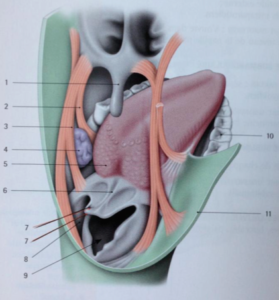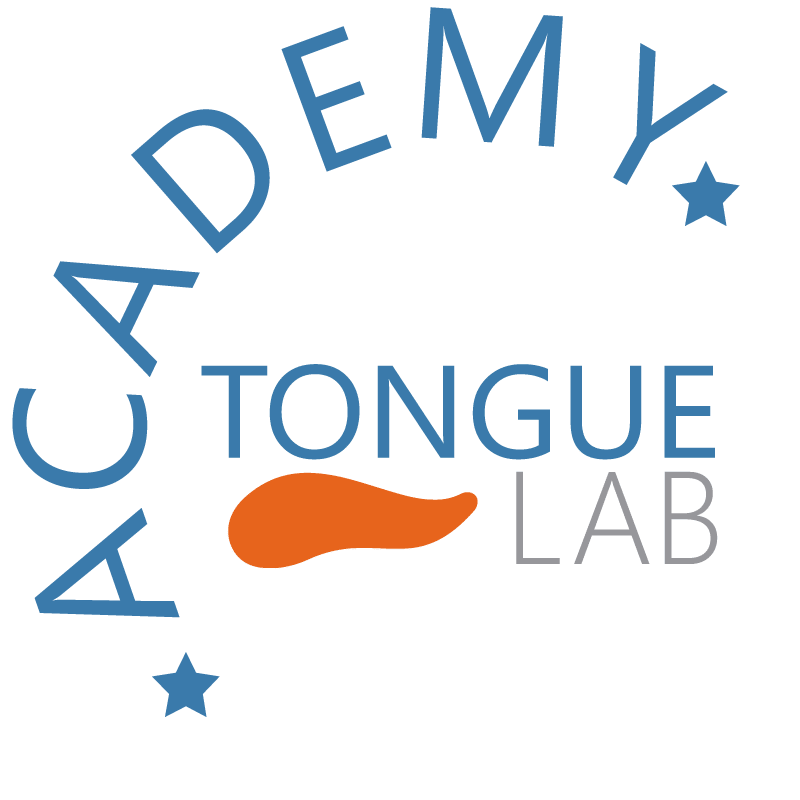Anatomy
The anatomy of the tongue is complex. This is due to the important roles it plays in our body and its position at the crossroads of the respiratory and alimentary tracts.
The tongue is mainly located in the oral and pharyngeal cavity, which is itself delimited:
- At the top by the bony palate and at the back by the palate veil, which separates the mouth proper from the pharynx;
- Laterally, and in front by the teeth and jaws;
- Below, through the oral floor consisting of the tongue, membranes, muscles, fat and skin;
- At the back by the opening on the pharynx coming from the nose and going down to the trachea.
Some of its muscles are connected to the back of the skull, others at the front and sides of the throat are connected indirectly to the rest of the body.
The tongue muscles and nerves that control them are already in place by the 10th week of the embryo. This shows the vital importance of the tongue for the infant’s survival.
The infant should practice suckling in the mother’s womb to learn how to feed after birth. The contact of the tongue on the lower palate just above the incisors and with the molars stimulates the nerve endings notably involved in the correct functioning of nasal breathing. The sensation of contact with the lateral teeth keeps it in the right position.

To fulfill its functions, a particular and unique property in the human body allows tongue to adopt complex forms and configurations. Indeed, the muscles of the tongue have a special configuration, which allows them to be attached to each other rather than just to the bones. The tongue is thus integrated into muscle systems that connect it to the pharynx, the palate veil, the skull and indirectly to the rest of the body.
When it is well positioned on the palate and in periods of inactivity, the tongue is suspended in the mouth, balancing the tensions of the different muscles. This posture requires a basic tonicity.
It is then understandable that a dysfunction creates greater tension in one or the other of the muscles and disrupts this balance. Moreover, when the muscles of the tongue are toned, they are tense both when we are standing and when we are lying down. Combined with the sensation of the tongue’s contact with the teeth and lower palate at rest, they allow the tongue to remain suspended in the oral cavity above the pharynx (especially during sleep when the muscles are relaxed). The tongue, keeping its physiological position at the front of the mouth, can perform its functions such as swallowing, phonation, while allowing the passage of air at the back.
Lingual retraining allows the tongue to be correctly positioned and toned, thus enabling it to fulfil its physiological functions.
Lire les autres chapitres :

